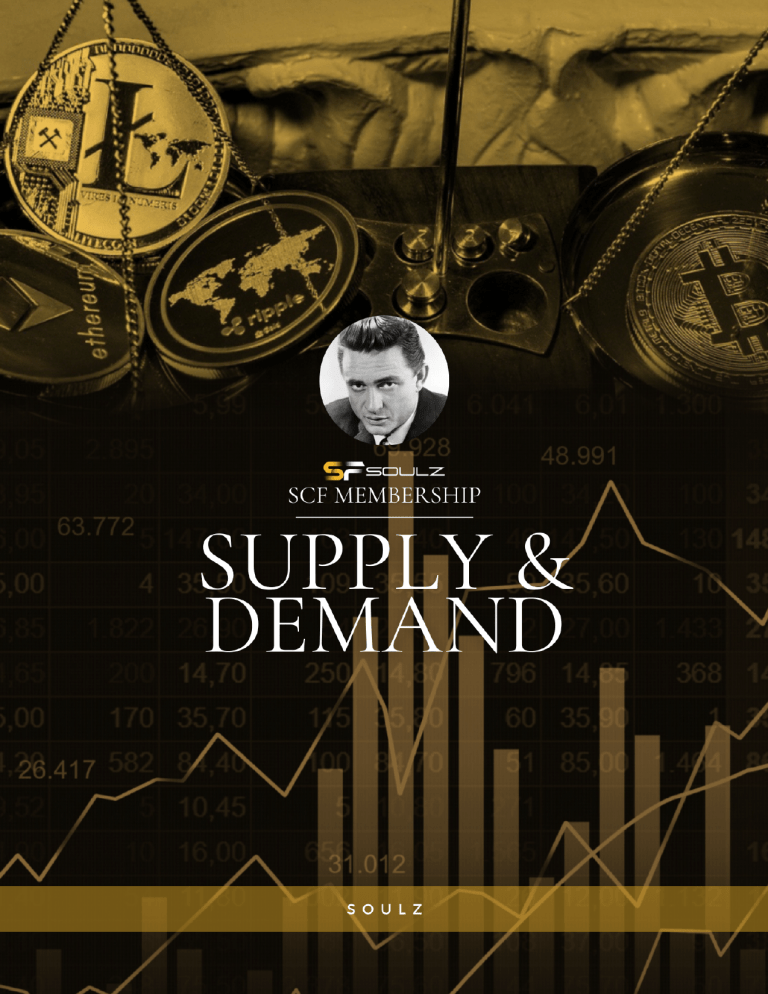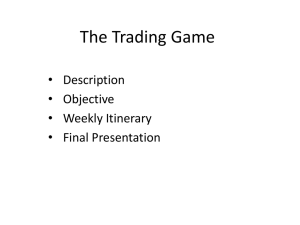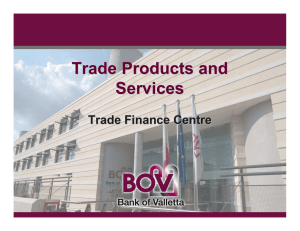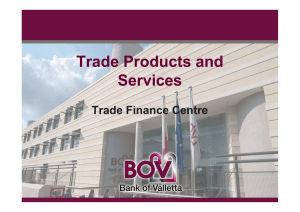
www.soulzcourse.com I. THEORY The foundation of a market economy is Supply and Demand, where goods and services are offered and people are willing and able to buy them. While they are often studied as separate concepts, Supply and Demand are interconnected and rely on each other. In an open market, Supply and Demand dictate prices, allowing for optimal allocation of resources, but monopolies and speculators can manipulate prices, ignoring buyers. The illustration above demonstrate that suppliers tend to increase their production as prices rise, whereas buyers typically increase their demand as prices fall. This creates a conflict of interest that is intended to foster a robust and efficient market. However, in reality, we know that there are instances where suppliers do not increase output despite rising prices unless there is healthy competition. Similarly, buyers may not increase their purchasing even if prices decrease when they lack the means to do so. What is a Demand or Supply Zone? Demand Zones - Shows the location where large fund traders have created a significant number of buy positions. It is a level where buyers are willing to enter the market at that current price/level. Supply Zones - These zones are the points where large fund traders place a significant number, or size of sell positions. It’s a level where sellers are willing to sell their positions. 1 www.soulzcourse.com II . FRACTAL PATTERN First, let’s look at how we can identify Demand Zones, there are 2 valid patterns you can look for: 1. DBR or Drop - Base - Rally 2. RBR or Rally - Base – Rally 2 www.soulzcourse.com Next, we’ll be looking at how to identify Supply Zones, there are also 2 valid patterns you can look for: 1. RBD or Rally - Base - Drop 2. DBD or Drop - Base – Drop 3 www.soulzcourse.com Now that we’ve identified Supply and Demand Zones, let’s now see some examples and how price reacts to these Zones: DBR: We can see in the Image Below how Price retraced to the Zone 2 times and rallies upward, thus validating the Demand Zone. RBD: For the Supply Zone, we can also see how the price tested the Zone two times and rallies downward. 4 www.soulzcourse.com When defining your Zones, knowing Candlestick Patterns can define whether your Zone is good or not. Here are some of the Candlestick Patterns that is a great confluence to your Zones: Shooting Star: Dojis: 5 www.soulzcourse.com Morning Star and Evening Star: When it comes to my implementation of this trading strategy, I typically adhere to a general rule that entails the presence of Engulfing candles on either the Drop or Rally move, as this tends to indicate whether the Buyers or Sellers are in control of the market. In addition, I also look for instances where the Engulfing forms and price leaves an imbalance, which I find to be a strong indicator of a significant shift in the market's momentum. This approach has proven to be quite effective in my experience, and I believe that it can be a useful tool for traders looking to make informed decisions based on market trends and signals. 6 www.soulzcourse.com III . RULES The Rule of 3 of S&D Trading: 1. One of the most fundamental principles in trading is to sell at Supply Zones, which typically occur when there is an excess of sellers in the market, leading to a price level at which selling pressure exceeds buying demand. By following this principle, traders can take advantage of market movements by entering into short positions at the Supply Zones and profiting from the subsequent price drop. 2. Another key principle in trading is to buy at Demand Zones, which are typically characterized by an excess of buyers in the market, leading to a price level at which buying demand exceeds selling pressure. By following this principle, traders can enter into long positions at the Demand Zones and profit from the subsequent price increase. 3. One important aspect of successful trading is to always look to the left of the chart when analyzing market trends and making trading decisions. This means taking into account the historical price movements and patterns that have occurred in the market, as they can provide valuable insights into future market movements and help traders make more informed decisions. By studying the left side of the chart, traders can identify key support and resistance levels, as well as other patterns that may indicate potential market trends. This can be particularly useful in identifying market reversals, as well as other opportunities for profit in the market. 7 www.soulzcourse.com To determine whether a candlestick trend will form a Supply or Demand Zone, we can examine whether there has been a substantial drop (in the case of Supply) or rally (in the case of Demand) from the base area that the trend has just formed. This is typically indicated by a significant Candlestick that exceeds the close or open of its previous Candlestick, thereby confirming the formation of a new area of Supply or Demand. Once this has been established, traders can begin drawing all the relevant zones on the chart, carefully identifying each of the zones and the corresponding Candlestick types to help inform their trading decisions. This approach can be particularly useful in determining potential entry and exit points, as well as identifying key trends in the market. After identifying a demand or supply zone and drawing it on the chart, traders can refine the area further by examining the lower Time Frame (TF), which can help to more accurately determine the appropriate Stop Loss placement. Typically, the Stop Loss (SL) is set just above or below the supply or demand zone, providing traders with a buffer against potential losses. Additionally, traders can identify potential Take Profit (TP) areas by looking at the chart and examining all the relevant areas of resistance and support, such as Old Highs/Lows, a support or resistance level, or an Old Supply/Demand zone. By taking these factors into account, traders can more effectively manage their risk and maximize their potential profits when trading in the market. 8 www.soulzcourse.com IV. COMPRESSION Compression is a specific type of price action that indicates a potential reversal of the prevailing price trend. This pattern is typically characterized by the formation of wedges, which can take on either a downward or upward orientation depending on the prevailing market conditions. This market condition ca be tradeable once price reaches a Demand or Supply Zone based on what wedge was created. One effective approach for entering into trades strategically is to place a pending order at the supply or demand area that is closest to the zero wedge SND (Supply and Demand) Zone, as identified on the chart. To further refine this approach, traders may choose to utilize pending orders in multiple layers, with smaller quantities, in order to manage risk more effectively and potentially increase the chances of realizing profitable returns in the market. This type of Price Action is really specific and should be just kept in mind rather than looking for it often. As you are starting out, focus on the basics instead. 9 www.soulzcourse.com V. Fake Outs A Fake Out occurs when Support and Resistance traders are anticipating a break of a particular support or resistance area that has been tested several times (often three times, at R1, R2, and R3), To trade this scenario, after a fake breakout of the support or resistance, traders should wait and identify the Supply or Demand Zone created, then take their entry from there. Examples: 1. 10 www.soulzcourse.com Final Thoughts: These are the basics and the foundation of Supply and Demand Trading; this should start you off in the right foot if you want to approach the market this way. Put the time and effort in to identifying and using this way of trading and you shall profit of it. One thing to note when finding Supply and Demand, is that you should find or wait for it in a significant level and should not be taken blindly (levels are as follows: a HTF S/R, in an Imbalance in a Higher TF, above an Old High/Low in the HTF, HTF Market Structure is aligned). HTF context always matter when trading S&D. Lastly, context matters and having more confluence in your trading will always be better than none. Thank you for reading! CryptoSoulz Links: Twitter : https://twitter.com/_Soulz Discord : https://discord.gg/umVkVHbcfe Website : https://soulzcourse.com/ 11





